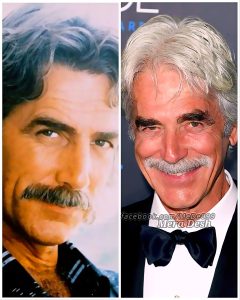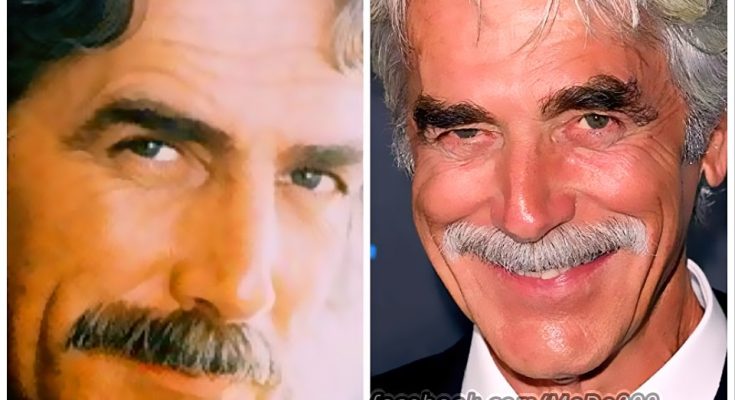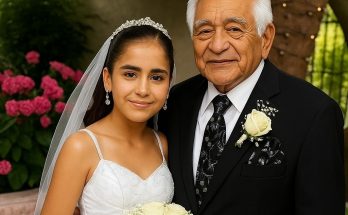
When people think of Sam Elliott, they picture the mustache before anything else. Thick, perfectly groomed, and instantly recognizable, it has become one of the most defining visual signatures in Hollywood. In “Tombstone” (1993), where Elliott played the lawman Virgil Earp, the mustache was as commanding as his gravelly voice. In “Road House” (1989), opposite Patrick Swayze, the same facial feature gave him a presence that balanced toughness with quiet authority. Even in lighthearted commercials, the mustache carried its own weight, reinforcing the image of Elliott as the ultimate cowboy figure.
Elliott himself admitted that Hollywood producers often encouraged him to maintain the look, explaining that audiences associated it with strength and traditional masculinity. While many actors transformed their appearance from role to role, Elliott’s mustache became a constant, anchoring his characters in a sense of authenticity. Directors valued it because it instantly signaled who he was on screen: a man of few words, conviction, and rugged appeal.
The cultural roots of this style run deep. In classic Westerns of the 1940s and 1950s, the mustache was often a symbol of authority or rebellion, but it rarely carried the balance of charm and gravitas that Elliott gave it. By the time he emerged in Hollywood during the 1970s, the Western genre had lost some of its golden-age glamour. Elliott’s facial hair resurrected the image of the cowboy hero, breathing new life into a fading archetype. His mustache became shorthand for old-school honor, grounding his characters in a visual tradition that audiences immediately trusted.
This emblem of masculinity was not confined to Westerns. In action films, dramas, and even comedic cameos, the mustache carried across genres with equal power. Elliott’s deep baritone voice amplified its effect, creating a fusion of sound and image that producers understood was nearly impossible to replicate. Many younger actors tried to emulate the style, but none achieved the same effect because it was never about grooming alone. For Elliott, it was an extension of his personality and his physical presence.
Cultural commentators noted how rare it was for a piece of facial hair to achieve iconic status. Magazines often highlighted Elliott’s mustache in profiles, analyzing its role in shaping his stardom. Fans wrote letters and even styled their own looks after him, proof that this was not simply a cinematic accessory but a trendsetting cultural phenomenon. In interviews, Elliott acknowledged the attention with humility, often joking that his mustache had its own career.
The influence went further than audiences realized. Costume designers and makeup artists frequently discussed how easy it was to build Elliott’s wardrobe once his mustache was in place. A rugged coat, a cowboy hat, or a sheriff’s badge instantly worked because the mustache tied the entire character together. Casting agents also understood its power. Elliott was repeatedly chosen for roles where silent authority mattered, and more often than not, his mustache was cited as part of the reason.
Even advertisers tapped into its influence. In beer commercials, voiceover work, and later in campaigns for luxury brands, Elliott’s mustache conveyed both reliability and charisma. It became a marketing tool as recognizable as his name, a bridge between Hollywood stardom and American cultural identity. When audiences saw it, they immediately connected to ideas of grit, loyalty, and quiet strength.
Hollywood has seen countless trends in facial hair come and go, yet Elliott’s mustache remains singular. It shaped his casting choices, elevated the authenticity of Western storytelling, and created an image of masculinity that spanned generations. Its enduring fame demonstrates how something seemingly simple can become legendary when matched with the right actor. Even today, Elliott knows the mustache is inseparable from his image. It defines him not as a costume piece but as a living symbol of cinematic masculinity, a feature that audiences continue to celebrate.
Sam Elliott’s mustache proves that one iconic detail can carry the weight of a career, embodying character, strength, and timeless charisma in a way no dialogue ever could.



